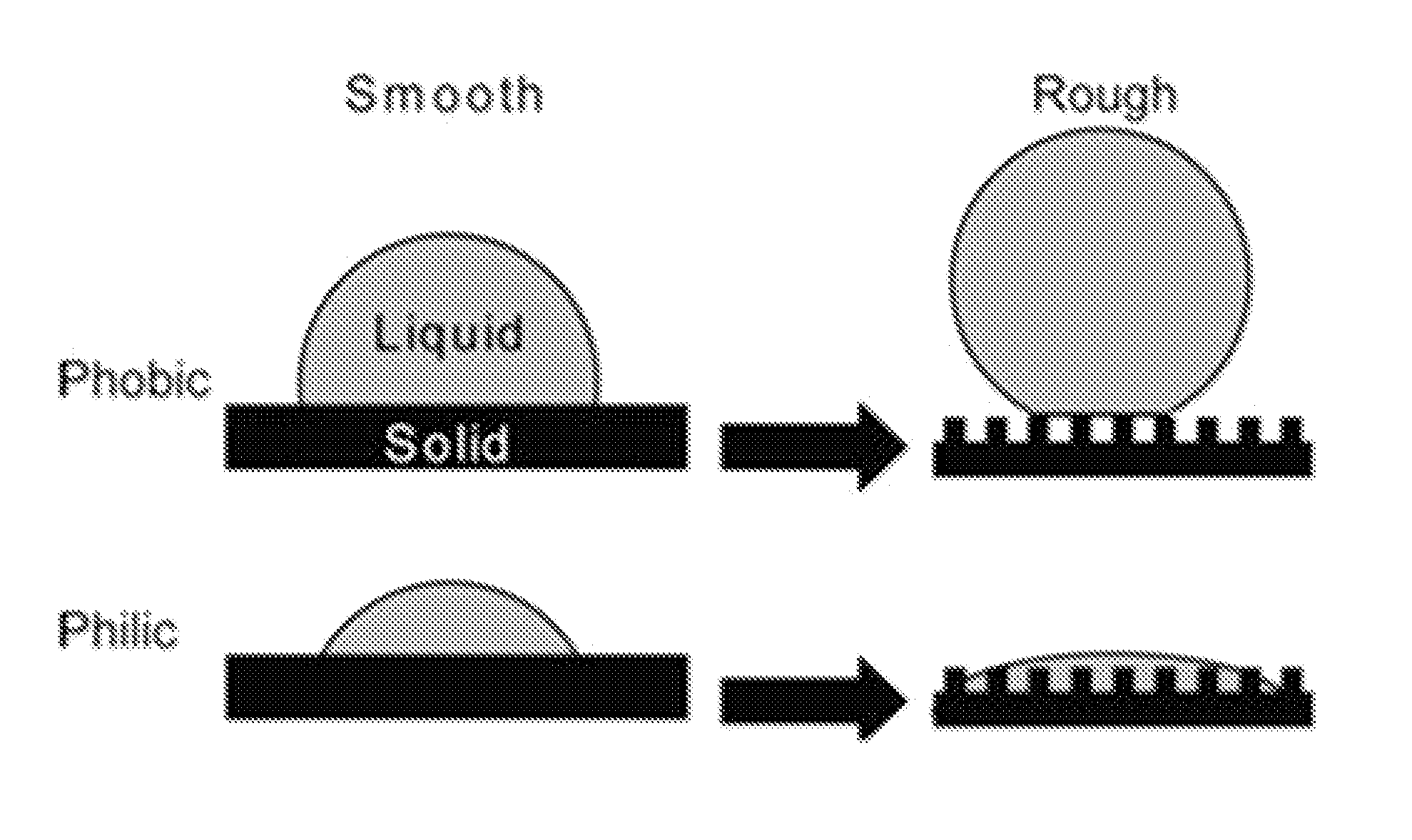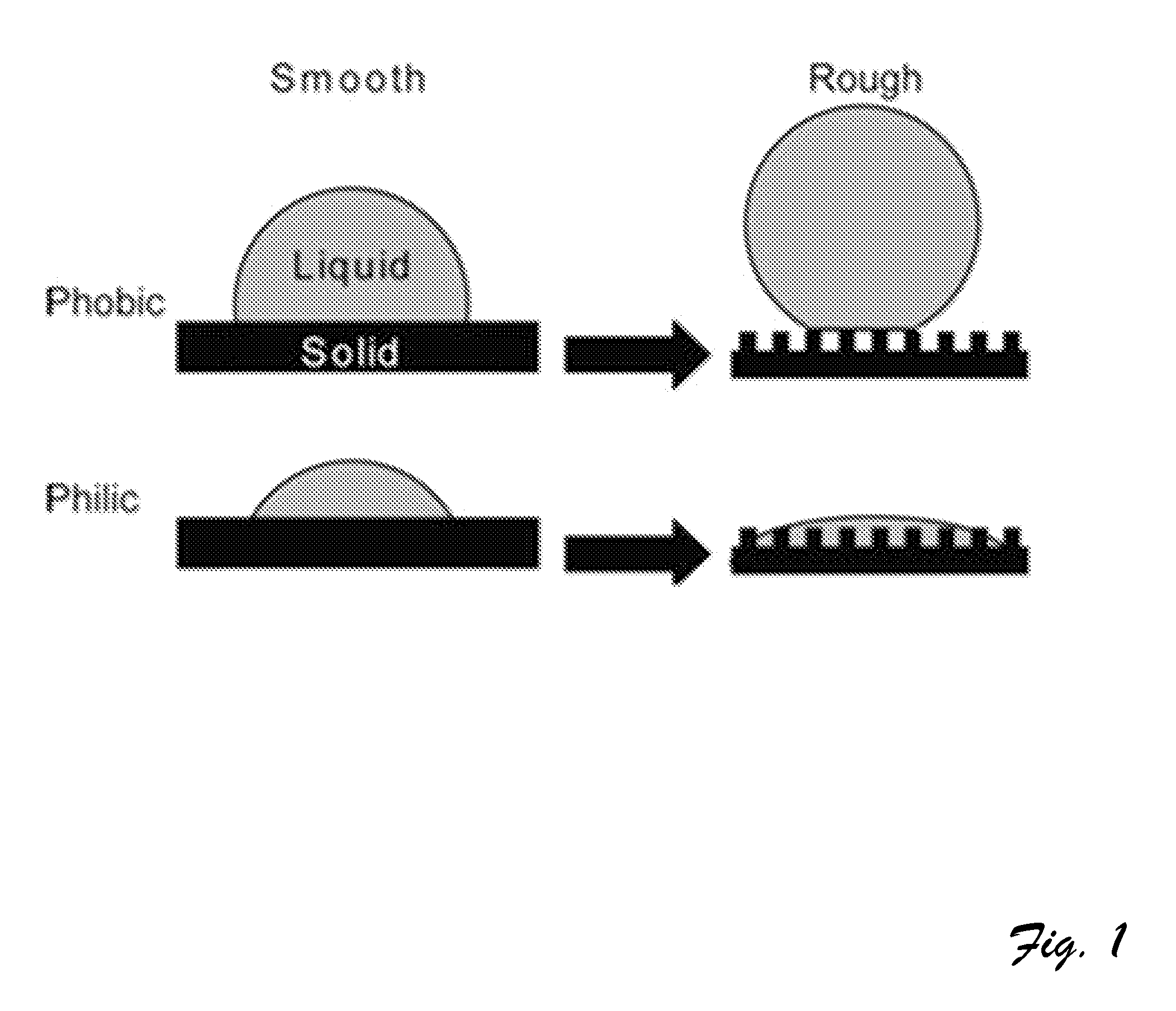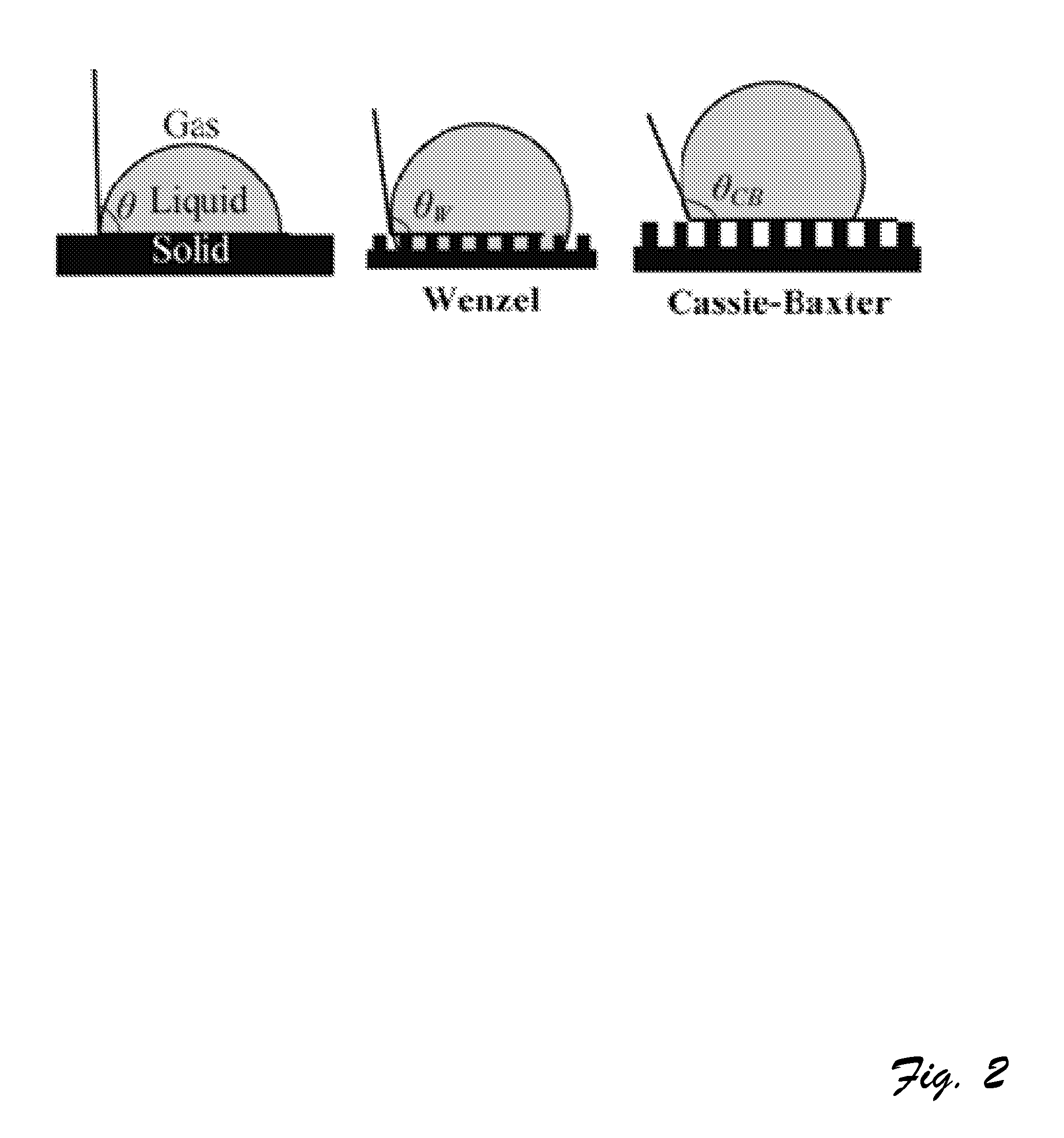Multi-scale, multi-functional microstructured material
a microstructured material and multi-functional technology, applied in the field of multi-functional, multi-functional microstructured materials, can solve the problems of degrading the microstructure effect, low pressure resistance of the surface, and the inability to demonstrate the use of microstructured surfaces to combine enhanced properties on the surface, etc., to achieve increased heat transference, reduce friction, and increase friction
- Summary
- Abstract
- Description
- Claims
- Application Information
AI Technical Summary
Benefits of technology
Problems solved by technology
Method used
Image
Examples
Embodiment Construction
[0023]As FIG. 1 illustrates, simple surface roughening techniques can increase the surface area of a solid and thereby amplify the natural surface chemistry: phobic interactions become more phobic upon simple roughening, and philic interactions become more philic. When the surface is phobic to a liquid such as water, it is termed hydrophobic and can be rendered superhydrophobic by microstructuring. Surface roughness amplifies natural surface chemistry.
[0024]Three commonly used models describe different wetting states of a liquid drop resting on a solid: the Young relation, Wenzel relation, and Cassie-Baxter relation. In 1805, Thomas Young analyzed the interaction of a fluid droplet resting on a solid surface surrounded by a gas in FIG. 2 by performing a force balance of the interfacial forces. A droplet resting on a solid surface and surrounded by a gas forms a characteristic contact angle θ.
[0025]The force balance showed
cosθ=γSV-γSLγLV(1)
where the contact angle of the droplet θ is ...
PUM
| Property | Measurement | Unit |
|---|---|---|
| contact angle | aaaaa | aaaaa |
| microstructure | aaaaa | aaaaa |
| boiling points | aaaaa | aaaaa |
Abstract
Description
Claims
Application Information
 Login to View More
Login to View More - R&D
- Intellectual Property
- Life Sciences
- Materials
- Tech Scout
- Unparalleled Data Quality
- Higher Quality Content
- 60% Fewer Hallucinations
Browse by: Latest US Patents, China's latest patents, Technical Efficacy Thesaurus, Application Domain, Technology Topic, Popular Technical Reports.
© 2025 PatSnap. All rights reserved.Legal|Privacy policy|Modern Slavery Act Transparency Statement|Sitemap|About US| Contact US: help@patsnap.com



